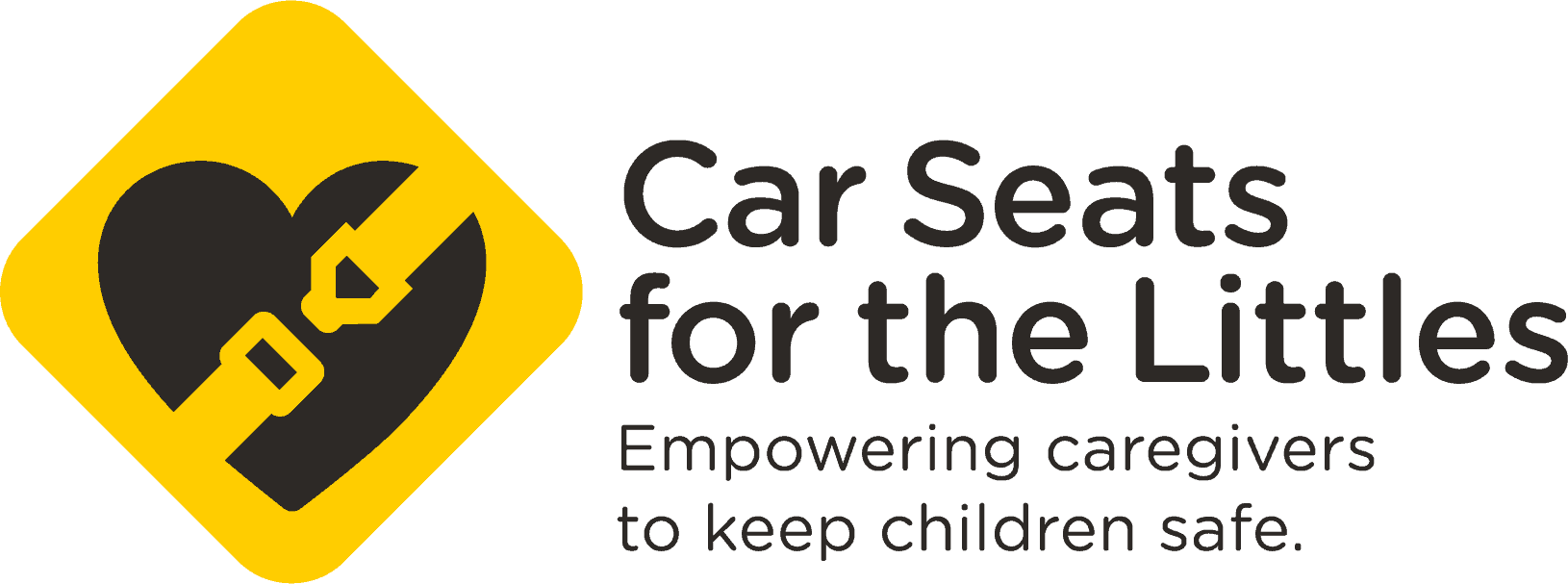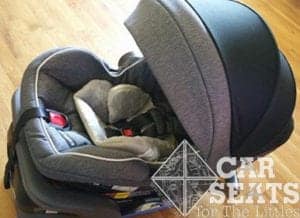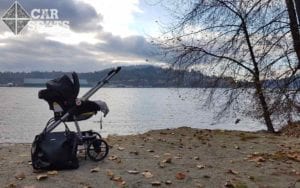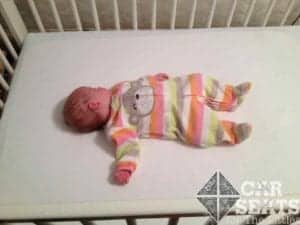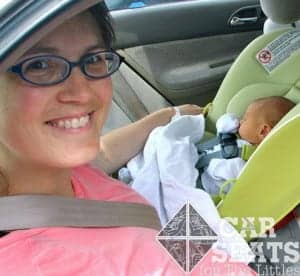Rear facing only car seats offer quite a lot when it comes to convenience. These types of car seats typically include two parts — a base that remains installed in the vehicle and an infant carrier portion that easily snaps in and out of the base. Many caregivers like this type of car seat for newborns and younger babies because it makes bringing the baby to and from the vehicle fairly easy.
A 2010 AAP study estimated that 43,562 car seat–related injuries were treated in emergency departments from 2003 to 2007. These injuries were sustained outside of car crashes.
That data suggests that, while convenient, rear facing only car seats can be challenging to use safely and properly. We’ll highlight some of the common challenges and suggest ways to use your child’s rear facing only car seat safely.
It’s these injuries that we’d like to help prevent. We’ll start with two main concerns:
- Even though babies often fall asleep while in their car seats, infant carriers are not a substitute for a safe sleep space.
- Children falling out of their car seats and while in their car seats are the vast majority of car seat related injuries among infants.
Common Car Seat-Related Injuries and How to Prevent Them
Before You Leave the House
Rear facing only car seats offer new parents the convenience of properly buckling baby before venturing out to the car. This new task is difficult and very important, and taking the time to do it right is essential. But bringing the car seat into the house also presents some challenges. It can be tempting to place the car seat on an elevated surface such as a table or a couch, but each year many children are injured when these car seats fall, or children fall from the car seat.
There’s a simple solution to this challenge: buckle baby with the car seat safely on the floor. Get in the habit of never placing the car seat on any elevated surface and you will protect your child from the most common car seat injury.
Anytime the baby is in the carrier, secure the harness as if the child is going for a car ride. While a loose harness can add some comfort when the carrier isn’t on the road, a loose harness converts that harness into a strangulation risk.
Vehicles that aren’t Cars
Strollers
Many rear facing only car seats are sold as part of a travel system. These systems include a stroller and the car seat, plus a mechanism to attach the car seat to the stroller. Use that mechanism every time to ensure that the car seat is properly secured to the stroller.
Some strollers that are sold separately offer an optional adapter for some rear facing only car seats — these adapters attach to the stroller and allow the car seat to click into the stroller. That mechanism must be used every time to ensure that the car seat is properly secured to the stroller.
When using the car seat with the stroller, make sure that the child is snugly secured in the harness. Keep in mind that car seats are designed for use in vehicles. While it can be convenient to transport the car seat on a stroller, the seat’s primary use is still in the vehicle, not the stroller.
Shopping Carts
Rear facing only car seats attach to the base in the car via a connector that clicks into place. These connectors will click onto anything that’s small enough to hold them. HOWEVER. Just because the car seat clicks onto a shopping cart, or anything else, that doesn’t mean that the car seat was designed to attach there.
Rear facing only car seats are only designed to click into their compatible car seat base. They’re not designed to click securely into shopping carts.
If carrying the baby or using a stroller is not an option, place the rear facing only car seat in the basket of a shopping cart for a safe shopping trip: there is no safe way to connect a car seat to the top of a shopping cart. Even shopping carts with designated car seat holders can become top heavy and tip over.
Inside the House
Sleeping babies present a large challenge — transferring them from the car seat to their crib doesn’t always work (for my kiddos, it never worked, not even one time!!) but the American Association of Pediatrics recommends only using a car seat for its intended purpose — transporting the child. Transport Canada also makes the same recommendation.
“Always use a firm sleep surface. Car seats and other sitting devices are not recommended for routine sleep”
That’s best practice, and that’s always what we strive for. We suggest removing a sleeping child from the car seat when the ride is over. An additional risk comes when a caregiver loosens the harness of a sleeping child’s car seat and converts that harness into a strangulation risk. If possible, plan trips around nap times so the child can sleep at home.
Limit Time Spent in the Car Seat
The amount of time your child can comfortably remain in the car seat will vary. We suggest taking frequent breaks on long days out, making stops on road trips, and removing the baby from the car seat for feedings. We suggest taking advantage of pretty much any excuse to stop the car and remove the baby from the car seat for a break before continuing on.
Fall Hazards
It seems so easy to place the carrier portion of the car seat on a table, a couch, the trunk or roof of the car. But doing so creates a fall hazard. We strongly suggest leaving the carrier on the floor when it’s not being used in the vehicle.
Long Trips
Though there is no hard and fast rule about how long children should remain in their car seats, babies need lots of attention that can’t be given in a moving vehicle. Long trips take longer with small children who need frequent feeding, changing, and stretch breaks. Plan for more frequent breaks and enjoy the journey!
Before you Go
Before long road trips, take a moment to check your child’s car seat. As always, we recommend meeting with a CPST in person any time you have a new car seat or car: CPSTs will help you learn to use your seat properly, so you’ll be confident in the use of your safety equipment during your journey, no matter what goes awry.
- Make sure the base is still installed snugly with less than 1 inch of movement at the belt path. Make sure the recline angle is correct for the child’s age/head and neck control.
- Make sure the harness is adjusted to fit the child properly.
On the Road
While you’re on the road, stop frequently. That’s a minimum of every 2 hours. Stop more frequently if your child is a newborn, an infant, or has special needs. Road trips with a baby in tow just take longer than pre-baby road trips.
Final Thoughts
While rear facing car seats offer many advantages, they also present a number of significant safety challenges when they’re not used properly. As you embark on your journey into parenthood, keep a few key safety points in mind:
- Limit the time your baby spends in their car seat.
- Keep the car seat carrier off of elevated surfaces.
- Load baby in and out of their car seat with the carrier on the floor.
- Use the carrier only with approved strollers and or adapter devices.
- Keep the harness snug at all times.
